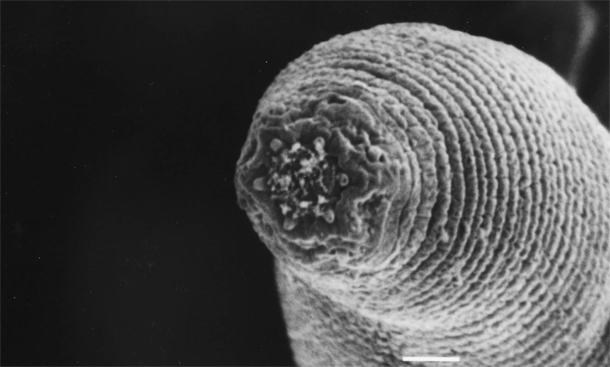Science News
Worm from Hell (or Mars)

Last week, researchers, publishing in the journal Nature, described the worm from hell: Halicephalobus mephisto.
H. mephisto, so named for Faust’s devil, ruler of the underworld, was discovered in a South African gold mine, over two miles below the surface, in an area called the subsurface.
The subsurface is hot with very little oxygen. Not exactly a place you’d expect to find life.
And yet, the subsurface is teeming with life, at least in the single-celled form. From the Not Exactly Rocket Science blog in Discover:
There are more microbes in the subsurface (bacteria, and the extreme archaea) than there are up top, and collectively, they might even outweigh all surface life. Put every tree, elephant and human on a giant scale, and they’d be balanced by the microscopic masses that lurk underground.
H. mephisto is the first complex life form discovered at these depths. It’s a nematode worm, about a half a millimeter long. To say that nematodes are tough is a bit of an understatement. According to Wired:
Various members of the ubiquitous, 28,000-species-strong phylum can live almost without oxygen, in extremely acidic environments, and despite prolonged starvation. When space shuttle Columbia tragically disintegrated upon re-entering Earth’s atmosphere in 2003, roundworms in a canister on its wings survived.
As tough as nematodes are, H. mephisto, as you can imagine, is even tougher, says Science Now:
The nematodes are extremely rare because there’s so little oxygen in their environment and they need to eat about 10,000 bacteria per day to survive.
Which naturally leads us to wonder what else might be down there or elsewhere? Again, from Science Now:
The study is “another step forward in finding life in places you don’t expect it,” says Michael Meyer, an astrobiologist who is the lead scientist for NASA’s Mars Exploration Program in Washington, D.C. “The discovery of multicellular organisms in the Hadean subsurface world raises the unthinkable possibility there could be multicellular life on Mars.”